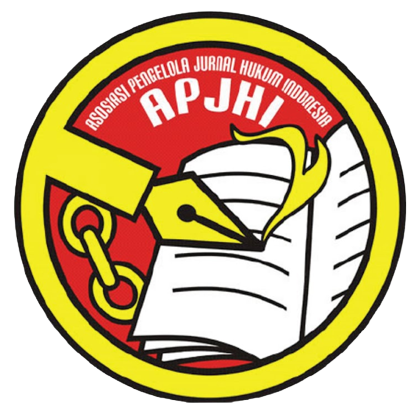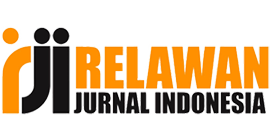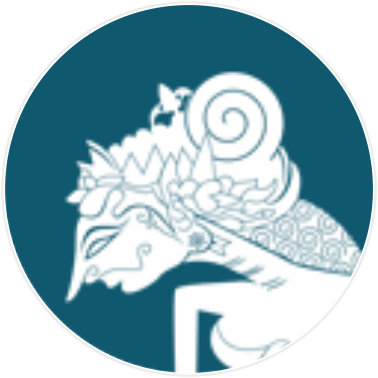PENGUATAN RESTORATIVE JUSTICE MELALUI PENDEKATAN ADAT DAN KEARIFAN LOKAL SEBAGAI ALTERNATIF PENYELESAIAN PERKARA PIDANA ANAK
Abstract
The child is the future and the next generation of the ideals of the nation, therefore the best interests of the child must be the responsibility of all parties. The Including the interests of children who are faced with the law. In the Criminal Justice System Law No. 11 of 2012 recognizes Justice's restorative approach in the settlement of child criminal cases. Restorative justice approach is intended to prevent children from the impression of criminal and psychological trauma due to the judicial process and also besides that restorative justice approach is an effort to restore the balance between the perpetrator and the victim, as well as the perpetrator with the community to the original state. One of the most important approaches to restorative justice is the traditional approach and local wisdom. Customary law and local wisdom should be an alternative solution in the realization of restorative justice. Therefore this paper intends to examine the legitimacy of customary law in the legal system in Indonesia and the extent to which it exists within the Criminal Justice System law. The method used in this paper is the normative approach. Based on the results of the study it was found that restorative justice through indigenous approaches and local wisdom has not been seriously accommodated in the Criminal Justice System Law. Customary law in the form of fulfillment of customary obligations is only considered as an additional criminal. The additional criminal principle is not independently dependent on the principal penalty. Should the state seriously apply the principle of restorative justice in the settlement of child criminal cases, the customary approach should be regarded as one of the main forms of the crime.
Keywords
Full Text:
PDFReferences
Gosita, Arif, 2003, Aspek Hukum Perlindungan Anak, Citra Aditya Bakti, Bandung.
Gultom, Maidin, 2008, Perlindungan Hukum Terhadap Anak dalam Sistem Peradilan Pidana Anak di Indonesia, Refika Aditama, Bandung.
Hadisuprapto, Paulus, 2003, “Pemberian Malu Reintegratif Sebagai Sarana Non Penal Penanggulangan Perilaku Delinkuensi Anak (Studi Kasus di Semarang dan Surakarta)”, Disertasi Ilmu Hukum, Universitas Diponegoro, Semarang.
Herlina, Apong dkk, 2004, Perlindungan Terhadap Anak yang Berhadapan Dengan Hukum, Manual Pelatihan untuk Polisi, POLRI dan UNICEF, Jakarta.
Iman, Sudiyat, 1991, Asas-Asas Hukum Adat Bekal Pengantar, Liberty, Yogyakarta.
Lamintang, 2002, Politik Pemidanaan, Liberty, Yogyakarta.
Marlina, “Penerapan Konsep Diversi terhadap Anak Pelaku Tindak Pidana dalam Sistem Peradilan Pidana Anak”, Jurnal Equality, Vol. 13 No. 1 Februari 2008.
Moeljatno, 2002, Asas-Asas Hukum Pidana, Bina Aksara, Jakarta.
Mulyadi, Lilik, 2005, Pengadilan Anak di Indonesia, CV.Mandar Maju, Bandung.
Primasari, Lushiana, “Keadilan Restoratif dan Pemenuhan Hak Asasi bagi Anak yang Berhadapan Dengan Hukum”, available from http://lushiana.staff.uns.ac.id/pdf, h. 3, diakses pada 5 September 2013.
Sambas, Nandang, 2010, Pembaharuan Sistem Pemidanaan Anak di Indonesia, Graha Ilmu, Yogyakarta.
Soekanto, Soerjono, 1986, Pengantar Penelitian Hukum, UI-Press, Jakarta.
Undang-Undang Nomor 11 Tahun 2012 tentang Sistem Peradilan Pidana Anak.
Undang-Undang Nomor 35 Tahun 2014 sebagai perubahan dari Undang-Undang Nomor 23 Tahun 2002 tentang Perlindungan Anak.
Vollenhoven, C. Van, 1987, Penentuan Hukum Adat, Djambatan, Jakarta.
Wahyudi, Setya dkk., “Pengembangan Diversi dalam Sistem Peradilan Pidana Anak sebagai Perlindungan dan Upaya Menghindari Pengaruh Buruk Proses Peradilan Terhadap Anak”, Jurnal Kertha Wicaksana, Vol. 15 No. 1, Januari 2009.
DOI: http://dx.doi.org/10.30652/jih.v7i2.5587
Refbacks
- There are currently no refbacks.
Jurnal Ilmu Hukum has been indexed by:
|

.png)





G.png)




